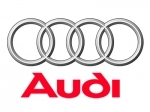
Mobile:
0411 222 333
11 Street Name Suburb, State, Australia, 1111
Sponsors


Title
Animals are a major group of multicellular, eukaryotic organisms of the kingdom Animalia or Metazoa. Their body plan eventually becomes fixed as they develop, although some undergo a process of metamorphosis later on in their life. Most animals are motile, meaning they can move spontaneously and independently. All animals are also heterotrophs, meaning they must ingest other organisms or their products for sustenance.
Most known animal phyla appeared in the fossil record as marine species during the Cambrian explosion, about 542 million years ago. Animals are divided into various sub-groups, including birds, mammals, reptiles, fish and insects.
Etymology
The word "animal" comes from the Latin word animalis, meaning "having breath".[1] In everyday colloquial usage, the word often refers to non-human members of kingdom Animalia. Sometimes, only closer relatives of humans such as mammals and other vertebrates are meant in colloquial use.[2] The biological definition of the word refers to all members of the kingdom Animalia, encompassing creatures as diverse as sponges, jellyfish, insects and humans.[3]
Characteristics
Animals have several characteristics that set them apart from other living things. Animals are eukaryotic and multicellular,[4] which separates them from bacteria and most protists. They are heterotrophic,[5] generally digesting food in an internal chamber, which separates them from plants and algae.[6] They are also distinguished from plants, algae, and fungi by lacking rigid cell walls.[7] All animals are motile,[8] if only at certain life stages. In most animals, embryos pass through a blastula stage,[9] which is a characteristic exclusive to animals.
Structure
With a few exceptions, most notably the sponges (Phylum Porifera) and Placozoa, animals have bodies differentiated into separate tissues. These include muscles, which are able to contract and control locomotion, and nerve tissues, which send and process signals. Typically, there is also an internal digestive chamber, with one or two openings.[10] Animals with this sort of organization are called metazoans, or eumetazoans when the former is used for animals in general.[11]
All animals have eukaryotic cells, surrounded by a characteristic extracellular matrix composed of collagen and elastic glycoproteins.[12] This may be calcified to form structures like shells, bones, and spicules.[13] During development, it forms a relatively flexible framework[14] upon which cells can move about and be reorganized, making complex structures possible. In contrast, other multicellular organisms, like plants and fungi, have cells held in place by cell walls, and so develop by progressive growth.[10] Also, unique to animal cells are the following intercellular junctions: tight junctions, gap junctions, and desmosomes.[15]
| No. | CATEGORY | TITLE | DATE | VIEWS |
|---|---|---|---|---|
3 | Blog | Animal - sample | 17/06/2013 | 481 |
2 | Blog | Flower - sample | 13/04/2013 | 929 |
1 | Blog | Animals and Flowers | 16/05/2012 | 603 |




